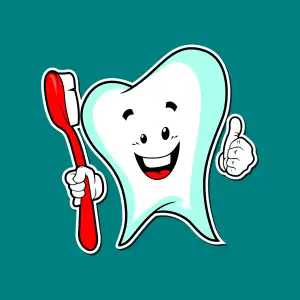Transform Your Body with a Powerful Body Recomposition Diet Plan

- Understanding the Concept of Body Recomposition
- Importance of Nutrition in Body Recomposition
- Key Components of a Body Recomposition Diet Plan
- Sample Meal Plan for Body Recomposition
- Incorporating Exercise for Optimal Results
- Monitoring Progress and Making Adjustments
- Potential Challenges and How to Overcome Them
Embarking on a journey towards a healthier and fitter body often involves a combination of diet and exercise. One approach gaining popularity is the Body Recomposition Diet Plan, which focuses on simultaneously reducing body fat and increasing lean muscle mass. This strategy differs from traditional weight loss diets as it aims to transform body composition rather than just numbers on a scale. By strategically manipulating nutrition and exercise, individuals can achieve a more toned and defined physique with improved overall health. Let's delve deeper into this innovative approach to achieving sustainable results in body transformation.
Understanding the Concept of Body Recomposition
Understanding the concept of body recomposition involves simultaneously losing body fat and gaining lean muscle mass. Unlike traditional diets that focus solely on weight loss, body recomposition aims to change the body's composition by reducing fat percentage and increasing muscle mass. This process requires a caloric deficit to burn fat while ensuring adequate protein intake to support muscle growth. It is a gradual process that prioritizes long-term sustainable results over quick fixes. By combining proper nutrition with targeted exercise, individuals can achieve a healthier and more toned physique through body recomposition.
Importance of Nutrition in Body Recomposition
The Importance of Nutrition in Body Recomposition
Nutrition plays a crucial role in body recomposition, as it provides the essential building blocks for muscle growth and fat loss. Consuming adequate protein is vital to support muscle maintenance and development while creating a calorie deficit through balanced macronutrient intake aids in fat loss. Additionally, micronutrients such as vitamins and minerals are necessary for overall health and optimal metabolic function during the body recomposition process. A well-rounded diet rich in whole foods ensures that the body receives the necessary nutrients to support physical changes effectively.
Key Components of a Body Recomposition Diet Plan
1. Protein: Essential for muscle repair and growth, aim for 1-1.2 grams per pound of body weight daily.
2. Carbohydrates: Provide energy for workouts and recovery; focus on complex carbs like whole grains and vegetables.
3. Fats: Important for hormone production and overall health; include sources like avocados, nuts, and olive oil.
4. Micronutrients: Vitamins and minerals play a vital role in metabolism and overall well-being; prioritize a variety of fruits and vegetables.
5. Hydration: Stay adequately hydrated to support digestion, nutrient absorption, and performance during workouts.
6. Meal Timing: Distribute meals evenly throughout the day to maintain energy levels and support muscle growth.
7. Caloric Balance: Adjust caloric intake based on goals (deficit for fat loss, surplus for muscle gain) while prioritizing nutrient-dense foods.
Sample Meal Plan for Body Recomposition
To kickstart your body recomposition journey, it's essential to focus on balanced meals that support muscle growth and fat loss. Here is a sample meal plan to guide you:
- Breakfast: Scrambled eggs with spinach and whole grain toast
- Mid-Morning Snack: Greek yogurt with berries
- Lunch: Grilled chicken breast with quinoa and roasted vegetables
- Afternoon Snack: Almonds and an apple
- Dinner: Baked salmon with sweet potato and steamed broccoli
Remember to include lean proteins, complex carbohydrates, healthy fats, and plenty of fruits and vegetables in your meals. Stay hydrated throughout the day and listen to your body's hunger cues. Consistency is key in achieving successful body recomposition results.
Incorporating Exercise for Optimal Results
Incorporating exercise is crucial for maximizing the results of a body recomposition diet plan. Resistance training, such as weightlifting, helps build lean muscle mass while burning fat. Aim for at least 3-4 sessions per week, focusing on compound movements like squats, deadlifts, and bench presses. Cardiovascular exercise, like HIIT or steady-state cardio, can further enhance fat loss. It's important to tailor your workouts to your goals and fitness level for optimal results in reshaping your body composition.
Monitoring Progress and Making Adjustments
Monitoring progress is crucial in a body recomposition journey. Regularly tracking body measurements, weight, and strength gains can provide valuable insights into the effectiveness of the diet plan. Adjustments may be necessary based on progress or plateaus. If weight loss stalls, increasing protein intake or adjusting calorie intake can help kickstart progress. On the other hand, if muscle gains slow down, tweaking workout intensity or incorporating new exercises can stimulate growth. Consistency and patience are key in achieving long-term success with body recomposition.
Potential Challenges and How to Overcome Them
1. Plateaus: It's common to reach a point where weight loss or muscle gain stalls. To overcome plateaus, consider adjusting your calorie intake or changing up your exercise routine.
2. Social Pressure: Friends and family may not understand your dietary choices. Communicate your goals clearly and suggest activities that align with your plan to stay on track.
3. Time Management: Balancing work, family, and meal prep can be challenging. Plan ahead, batch cook meals, and prioritize exercise to make the most of your time.
4. Emotional Eating: Stress or emotions can lead to overeating. Find alternative coping mechanisms like meditation or journaling to manage emotions without turning to food.
5. Unrealistic Expectations: Remember that body recomposition takes time and consistency. Celebrate small victories along the way and focus on long-term progress rather than quick fixes.
By recognizing these challenges and implementing strategies to overcome them, you can stay committed to your body recomposition journey for lasting results.
In conclusion, embarking on a sustainable body recomposition journey can lead to significant improvements in both physical appearance and overall health. By following a well-balanced diet plan tailored to your individual needs, incorporating regular exercise, and consistently monitoring progress, you can achieve long-lasting results. Remember that patience and consistency are key in this process. Embrace the journey towards a healthier and stronger version of yourself, and celebrate every small victory along the way. Stay committed to your goals, stay positive, and enjoy the transformation your body undergoes as you prioritize your health and well-being.
Published: 30. 03. 2024
Category: Health



